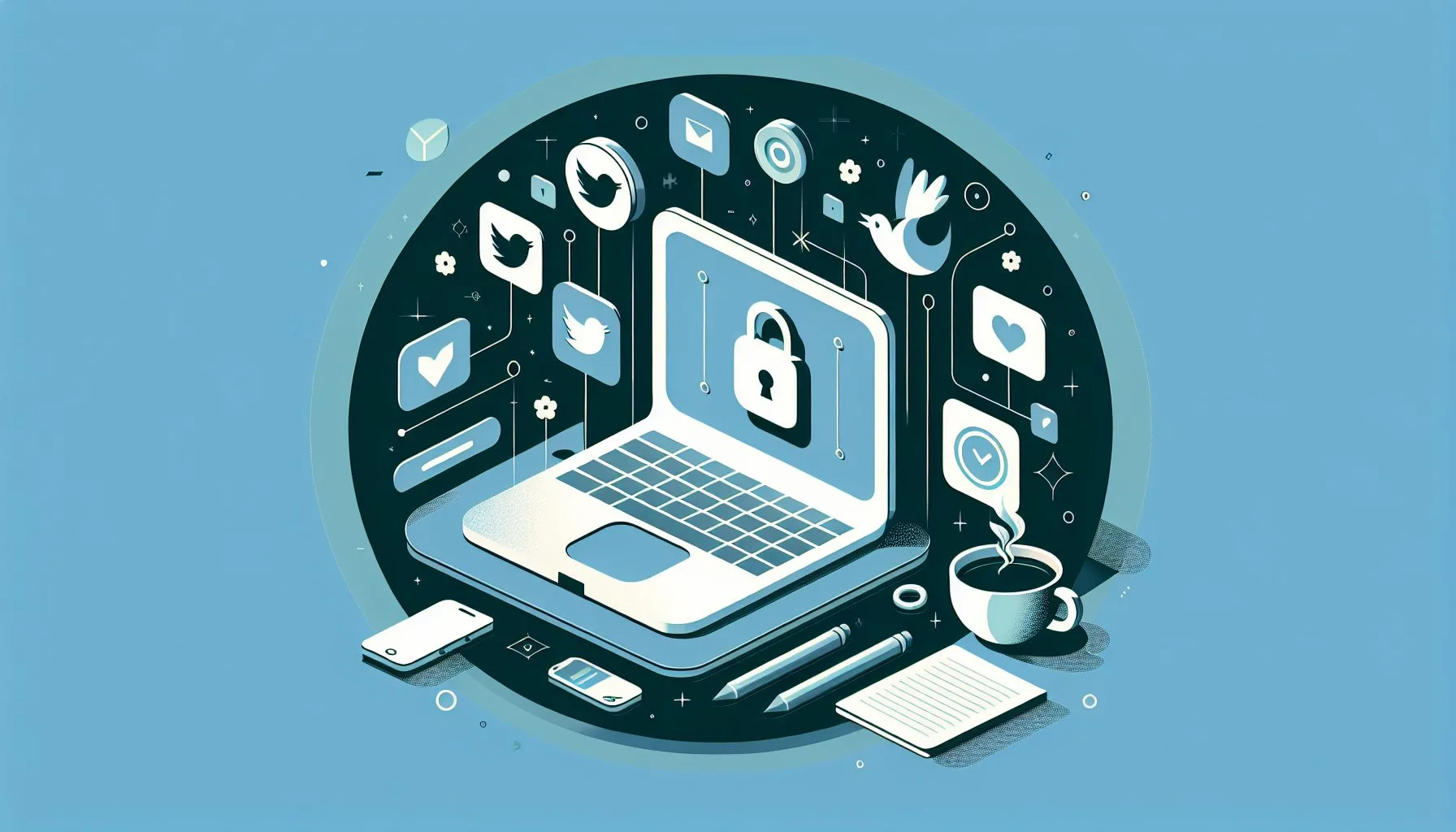Interesting Facts
Losing access to your Twitter account can feel like watching a favorite book close just before the last chapters—you’re eager to continue, but somehow, the story is paused indefinitely. Whether you woke up to find your profile locked, noticed strange activity hinting at a hack, or simply forgot your password, the frustration runs deep. For many, Twitter isn’t just a social app; it’s a crucial space for connection, self-expression, news, and sometimes even earning a livelihood. If you’ve found yourself silently asking, “How do I get my Twitter account back?” rest assured, you’re far from alone. Let’s carefully and clearly walk through each step to help you regain your access without added heartache or confusion.
Understanding Why You Might Be Locked Out
Before rushing into fixes, it’s worth understanding the reasons behind Twitter denying you access. Sometimes the reason is as simple as a forgotten password. Other times, it’s more serious—security protocols kicking in after unusual login attempts, or even suspensions following policy violations. Here are some of the common scenarios:
- Forgotten password or username: The simplest but most common cause.
- Account hacked or compromised: Someone else might be controlling your account.
- Temporary lockout due to suspicious login behavior: Twitter may detect what it sees as unusual activity and lock you out as a precaution.
- Deactivation by the user (intentional or accidental): Maybe the account was turned off, knowingly or not.
- Account suspension for violating Twitter rules: This can happen for posting harmful content, spam, or other infractions.
Recognizing which category fits your situation helps you choose the right way back inside.
The First Step: Use the “Forgot Password” Feature
The most straightforward route back to your account often starts with resetting your password. Twitter’s “Forgot Password” tool is designed for this purpose and can usually guide you out of the dark quickly:
- Head to Twitter’s login page and click on the link “Forgot password?”
- Enter your Twitter username, the email address, or the phone number linked to your account.
- Twitter will send a verification code either through email or SMS, depending on your setup.
- Take that code, enter it on the site, and choose a new password you’ll remember.
This simple process works smoothly most of the time. But if your contact info has changed or been compromised—that’s where things get tricky. Without access to your registered email or phone, Twitter may request additional proof before letting you in. We’ll explore those options shortly.
Get Your Twitter Account Back Today
When Your Account Is Locked or Temporarily Restricted
Sometimes you’ll see a message that your account has been locked, not because you forgot your password, but because Twitter spotted something unusual. This often happens after suspicious login activity, like someone from a different country tried to access your profile. Twitter locks accounts as a protective measure, asking you to verify you are the rightful owner by:
- Confirming your phone number or email through a verification code.
- Completing a Captcha or other challenges to ensure you are human.
- Sometimes even requesting you to confirm recent login actions.
Think of this as Twitter itself asking, “Are you really you?” It may seem like a hurdle, but it’s designed to safeguard your space from unauthorized access. Following these verification steps carefully usually gets you back in short order. For more detailed strategies on unlocking your account, check out how to unsuspend a Twitter account.
Recovering a Suspended Account: The Appeal Process
If you ran afoul of Twitter’s policies, your account might be suspended. This can happen for reasons such as:
- Posting content that breaks Twitter’s rules.
- Excessive automated or spam-like behavior.
- Other violations of platform policies.
However, not every suspension is justified, or sometimes issues are resolved and a second chance is warranted. To appeal:
- Visit Twitter’s Help Center and locate the suspension appeal form.
- Fill in details like your username, email associated with the account, and clearly explain why the suspension should be reconsidered.
- Submit the appeal and regularly check your email for updates.
Patience is key here—it can take days or even longer for Twitter’s team to review your case because countless appeals come through daily. Being honest, respectful, and clear can strengthen your chances. Remember, this process isn’t just bureaucracy; it’s a conversation with human reviewers who appreciate genuine explanations.
What to Do if You Deactivated Your Account
There’s also the possibility you yourself deactivated your account, maybe on impulse or by mistake. Fortunately, Twitter offers a 30-day grace period for reactivation:
- Simply log back in with your username and password within those 30 days.
- Follow any prompts confirming that you want to restore your account.
- After this window lapses, your account and its data may be deleted permanently.
Think of it like a pause button rather than a final stop. If you act in time, your followers, tweets, and settings will reappear, almost as if nothing happened.
Dealing With Hacked Accounts: Reclaiming Control
A hacked Twitter account can be deeply unsettling. You might spot odd tweets you didn’t write, messages you don’t remember sending, or find your password no longer works. Here’s how to take control back:
- Start by using “Forgot password” with your linked email or phone number to reset your password.
- If you no longer have access to those recovery options, go to Twitter’s Help Center and fill out their hacked account form.
- Change the passwords of any related accounts, especially your email. Hackers often try to multiply their access.
- Once inside again, promptly enable two-factor authentication (2FA) to add a second layer of protection. With 2FA, a login requires not just your password, but a temporary code from your phone—making future intrusions far tougher.
Recovering from a hack is stressful, but moving methodically through these steps helps protect you from further loss.
Contacting Twitter Support: When to Escalate
Automated tools and forms solve most problems—but occasionally, you might hit a dead end. If your account issue doesn’t fit usual categories or you receive vague error messages, reaching out to Twitter Support can help. While direct support is limited, a clear, calm message explaining your problem can cut through confusion:
- Specify exactly what access you lack.
- Share any error notices or messages you’ve seen.
- Mention relevant account details you remember.
Twitter processes millions of inquiries, prioritizing by the nature and urgency of the problem. Keeping your requests concise, polite, and well-documented improves your chances of a meaningful response. Persistence combined with clarity can sometimes be the key when automated fixes Google can’t reach. Learn more on how to reactivate your Twitter account through the official guide to reactivate Twitter.
Tips to Prevent Future Lockouts
After facing the hassle of account recovery, it’s natural to want to avoid repeating the ordeal. Here are some smart habits to keep your Twitter account secure:
- Change your passwords regularly—and avoid using the same password across multiple sites.
- Set up two-factor authentication right away for an extra barrier.
- Keep your email account locked down, since it’s the main gateway for password resets.
- Never click on suspicious links or reply to phishing messages promising quick fixes.
- Periodically review connected apps and revoke ones you don’t recognize or need.
Think of your online life as a digital fortress: a single weak point can open the gate to many accounts. Layered security steps build up your defenses and spare you stress later.
Reflecting on the Importance of Your Digital Identity
It’s worth pausing to appreciate why losing access to a Twitter account can hit so hard. Many of us invest years building a digital identity—a collection of tweets, followers, conversations, and communities. For professionals, activists, creators, or anyone who uses Twitter as a lifeline to the wider world, the platform becomes part of their personal story.
I once spoke with a journalist who lost their account just days before an important article went live. The Twitter profile was their main tool to promote and engage readers. Their journey back to access was filled with uncertainty, small triumphs, and a lot of waiting—emotions that remind us how digital doors aren’t just lines of code, but gateways to people’s voices.
Recognizing the human side of account recovery brings empathy for yourself and others facing these challenges. Behind every ticket number and form is a person wanting simply to reconnect.
Final Thoughts: Don’t Give Up on Reclaiming Your Account
Being locked out of your Twitter account can feel like a sudden barrier between you and your digital community. It’s frustrating, upsetting, even isolating. But don’t lose hope. With patience, the right approach, and clear steps, you can usually open that door again.
Whether you rely on “Forgot Password,” verify your identity through Twitter’s security checks, file a well-thought-out appeal, or contact support with clear details, the path back exists. Your voice matters in the Twitterverse. The platform’s recovery processes may sometimes feel complicated, but they serve to protect users and their data.
Take the time to follow official guidance, build stronger security habits, and look ahead to a safer experience online. Next time you wonder, “How do I get my Twitter account back?” remember: though the journey can be tough, each effort brings you closer to reconnecting with your audience and your stories.
Have a great day and keep tweeting! Also, if you’re interested in buying or selling Twitter accounts, check out our dedicated Twitter accounts for sale page or explore how you can sell your Twitter account with us.
How long does it typically take to recover a locked or suspended Twitter account?
Recovery times vary depending on the issue; password resets can be instant, while suspension appeals may take days or weeks due to the volume of cases Twitter reviews.
Can I recover my Twitter account without access to my email or phone number?
It’s challenging but possible by filling out Twitter’s hacked account or account recovery forms, providing additional proof of ownership as requested.
What are the best ways to protect my Twitter account from being hacked in the future?
Use strong, unique passwords, enable two-factor authentication, be cautious with links and connected apps, and monitor your account activity regularly.

